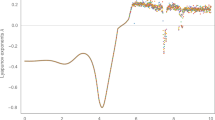Abstract.
Heart rate-dependent alterations in the duration of the electrically active state of cardiac cells, the action potential, are an important determinant of lethal heart rhythm disorders. The relationship between action potential duration and heart rate can be modelled as a nonlinear one-dimensional map. Iteration of the map over a range of physiologically relevant heart rates produces complex changes in action potential duration, including period doubling bifurcations, chaos and period doubling reversals. We present a computer algorithm that ensures, over the same range of heart rates, uniform state variable values (action potential durations) by application of small perturbing stimuli at appropriate intervals. The algorithm succeeds, even though the only parameter in the system (the heart rate) is immutable. Control of the dynamics is achieved by exploiting the inexcitability of the cardiac cells immediately after stimulation. This algorithm may have applications for the prevention of cardiac rhythm disturbances.
Similar content being viewed by others
Author information
Authors and Affiliations
Additional information
Received 24 April 1995; received in revised form 7 August 1995
Rights and permissions
About this article
Cite this article
Watanabe, M., Gilmour Jr., R. Strategy for control of complex low-dimensional dynamics in cardiac tissue. J Math Biol 35, 73–87 (1996). https://doi.org/10.1007/s002850050043
Issue Date:
DOI: https://doi.org/10.1007/s002850050043




